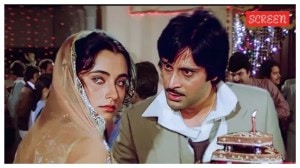End of leprosy in sight
JANUARY 8: The countdown has begun to declare the city free of leprosy, and as a sequel to this, it is planned to covert the civic run Acw...

JANUARY 8: The countdown has begun to declare the city free of leprosy, and as a sequel to this, it is planned to covert the civic run Acworth Leprosy Hospital, Wadala into a museum.
Explaining the rationale behind the move, Chief Medical Superintendent of municipal peripheral hospitals, W S Bhatki, said that in 1991 when the multi-drug programme was begun it was estimated there were about 12,000 leprosy cases. Along with this, the public health department also trained doctors and paramedical staff to detect the disease at an early stage, he said. With modern medicine coming into the market for treatment, the number of leprosy cases has come down to 2,600 and it is aimed to eliminate the disease completely in the next couple of years, he added.
Leprosy is spread by a bacteria that is generally transmitted through the air when a person is in close contact with a patient. However, most persons tend to ignore the early signs of this disease, and often land up at a hospital only when they reach the deformity stage. In most such cases, even a single dose of medicine is enough to turn the patient into a non infective stage so that he does not transmit the infection to others.
Dr Bhatki said that the treatment for leprosy is so advanced that at least 85 per cent of cases in the early stage with just one patch can be cured by simple treatment. Only the advanced cases that have to be referred to Acworth Hospital, he added. Here patients with limb deformities are given reconstructive surgery and physiotherapy so they can live a near normal life.
Another reason for successful control of leprosy is that follow up was done for each and every patient. Health workers even visited the homes of reluctant patients to ensure that they took the entire course of treatment and were declared as cured, he said.
In fact, even in the so-called leprosy colonies at Dahisar, Trombay, Sion and Chunabhatti, there are only five per cent leprosy patients among the resident, he said.
It is planned to start 250 voluntary reporting centres during the anti leprosy week in the city in February, where people will be encouraged to get themselves checked for leprosy, Dr Bhatki said. Patients can be diagnosed either by a classic clinical examination, in which the doctors pricks the white patch with a pin to check for any sensation, he said. Or in complicated case, a skin biopsy can be sent for a laboratory test.
Meanwhile, the plan to start a museum is already underway and this will have the entire history of the disease and the changes in modes of diagnosis and treatment, he said. Further, pictures taken of the patients before and after treatment in the 19th century will also be displayed, and the case histories of 1.5 lakh patients who have received treatment will be kept here, he said.
The health staff is looking forward to the day when they can all gather to declare the hospital as closed. As Gandhiji said, he would be happier to attend the function in which a hospital is shut down rather than starting one.
Photos





- 01
- 02
- 03
- 04
- 05


























